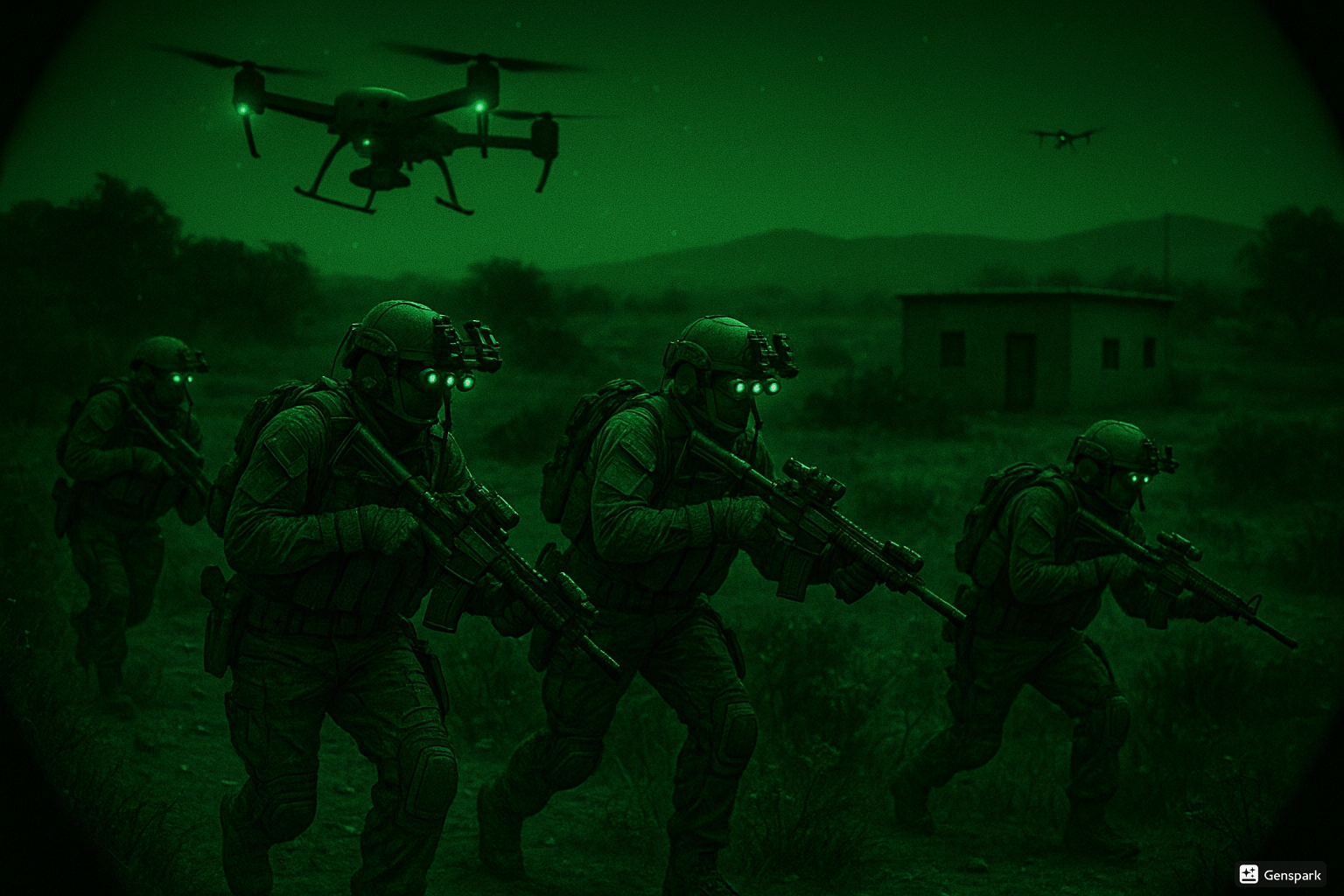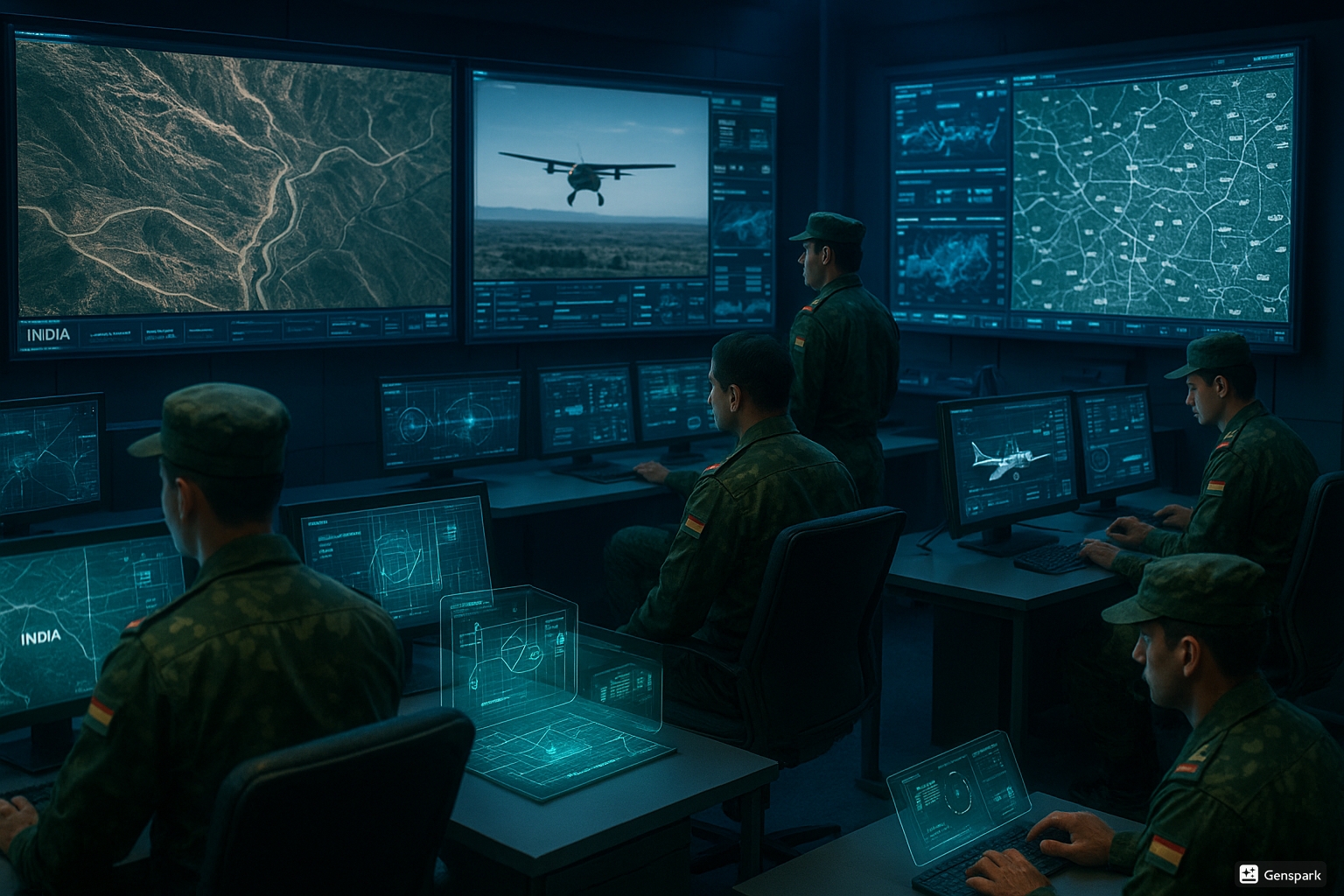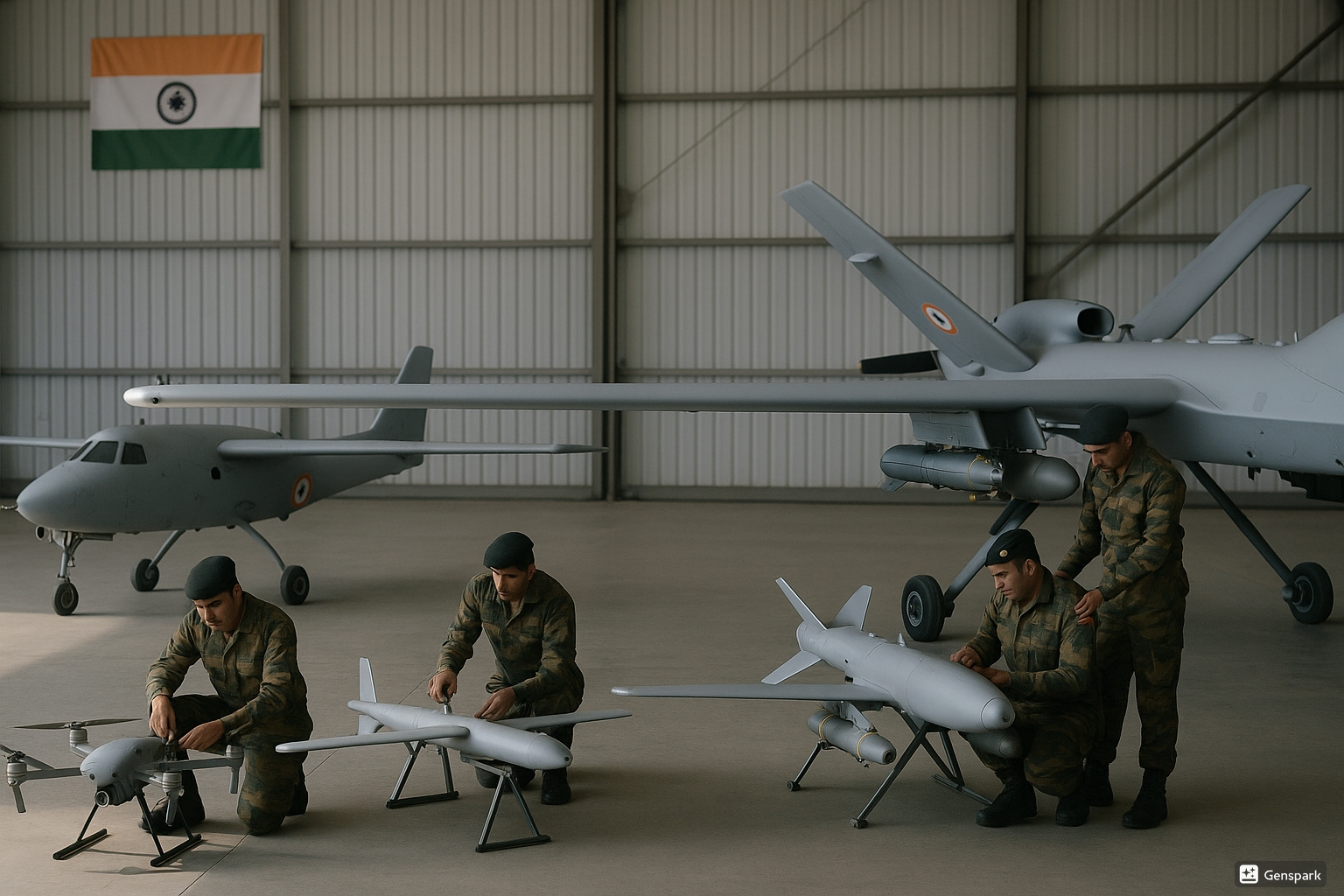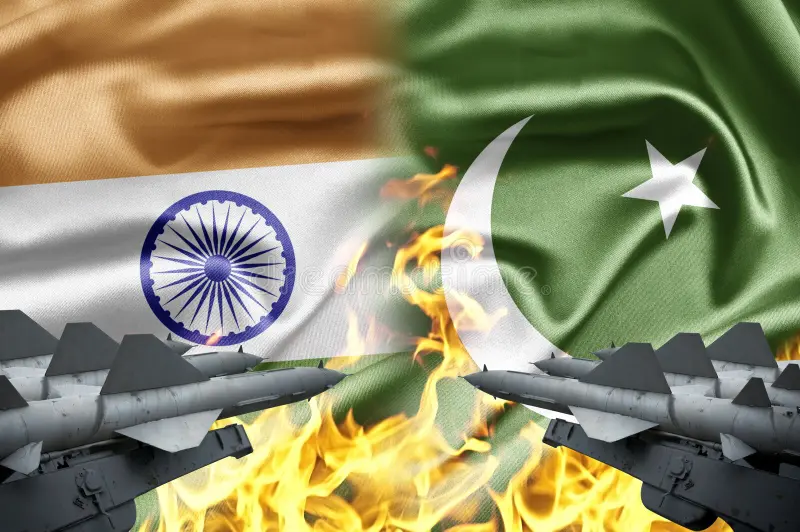
Introduction: The Shadow Operation Behind Operation Sindoor
Amidst the global spotlight on the visible missile and drone exchanges during the brief but intense India-Pakistan conflict in 2025, little is known about the “black space” that wove a critical silent thread for its final resolution. But for the first time, I can now give details of “Mission Sandor” - the secret special forces raid to take out key terrorist leaders and infrastructure and which was crucial in not only pulling both nuclear-armed nations back from the brink of full-scale war.
Based on leaked classified documents obtained by the blog, as well as accounts provided there by military analysts and technical specifications for the equipment used, what follows is a glimpse into how India’s elite special forces pulled off one of the most complex and highest-profile covert missions in the subcontinent’s history.
The Catalyst: Pahalgam Attack and the Path to Escalation
On April 22, 2025, a major terrorist attack near Pahalgam in Indian-controlled Kashmir killed 26 civilians, mostly Hindu tourists. The Resistance Front, a Pakistan-based offshoot of Lashkar-e-Taiba, first claimed responsibility before withdrawing their statement. This attack triggered a chain of events that would culminate in the most serious military confrontation between India and Pakistan since the Kargil war in 1999.
reaction from India was the announcement of a suspension of Indus Water Treaty among other diplomatic moves, behind the scenes a different line of action was being drafted. The masterminds behind the attack had been identified by military intelligence, and their elimination was now on top precedence. objective of what would become Mission Sandor.
Command Structure and Planning: The Birth of Mission Sandor

In a basement facility at India’s AFSOD headquarters the mission was formulated in top secret. Carried out by an integrated contingent from the three special operations elements of India, Para SF (Army), MARCOS (Navy) and Garud (Air Force), the mission of Sandor was tasked as a ‘surgical strike’ aimed at its leadership and infrastructure, of the terror groups involved in the Pahalgam attack.
The operation was named in honor of Major Sandor Singh, a decorated Para SF commando who was killed in a previous counter-terrorism operation back in 2023. “Minimal footprint, maximum impact,” was what his tactical doctrine within the operation would become.
The planning phase involved:
- Extensive intelligence gathering using satellite imagery, HUMINT (human intelligence) sources, and drone reconnaissance
- Creation of detailed 3D maps of the target areas
- Advanced simulation exercises using VR/AR technology to prepare the operators
- Coordination with air defense and cyber warfare units to create operational windows
Technology and Capabilities: India’s Secret Weapons

Mission Sandor demonstrated a leap in India’s military hardware and special forces capabilities. By 2025, India’s special forces have received a major equipment boost which was purely meant for such covert operations:
Advanced Drone Systems
The operation employed a multi-layered drone strategy:
- Nano-surveillance drones: Ultra-small UAVs with 10km range and FLIR capabilities that provided real-time intelligence
- IAI Harop loitering munitions: Israeli-made kamikaze drones that could loiter over target areas and strike with precision
- Indigenous swarm drones: Developed by India’s Defence Research and Development Organisation (DRDO), these AI-powered drones operated in coordinated groups, overwhelming defensive systems
These drone systems allowed the special forces to conduct extensive reconnaissance without detection and execute precision strikes on high-value targets. The operation became a showcase for India’s growing prowess in drone warfare, which would later become evident during the wider conflict.
Special Forces Equipment
The commandos involved in Mission Sandor were equipped with next-generation gear:
- Integrated battlefield management systems: Helmet-mounted displays showing real-time tactical information
- Advanced night vision: Allowing clear vision in zero-light conditions
- Stealth insertion capability: Including high-altitude low-opening (HALO) parachute systems and combat diving equipment
- Communications gear: Software-defined radios and satellite communication systems enabling seamless coordination across different units
According to an unnamed MARCOS officer involved in the operation: “The technology we had at our disposal was unlike anything we’d used before. The integration of drone support with our ground movement gave us unprecedented situational awareness.”

The Operation: May 5-6, 2025
Two days before the public launch of Operation Sindoor, Mission Sandor was quietly activated. Three teams of special forces operators were inserted across the Line of Control through different methods:
- Alpha Team: Para SF operatives conducted a HALO jump from high altitude, landing silently in the forested areas near Muzaffarabad
- Bravo Team: MARCOS personnel infiltrated through water routes via the Jhelum River
- Charlie Team: Garud commandos established a forward air control position to coordinate drone strikes and air support
The teams moved with exceptional stealth, using their advanced equipment to avoid detection by Pakistani border forces. Their primary objectives were:
- Neutralize the leadership of Jaish-e-Mohammed and Lashkar-e-Taiba involved in planning the Pahalgam attack
- Collect intelligence on terrorist infrastructure and future attack plans
- Designate targets for subsequent missile strikes in Operation Sindoor
- Extract safely before the main operation began
As the teams infiltrated deeper into enemy territory, they faced several tense moments. Bravo Team encountered a Pakistani border patrol and had to remain submerged in the Jhelum River for nearly 40 minutes using their specialized breathing apparatus. Alpha Team navigated through heavily forested terrain, employing nano-drones to scout ahead for potential threats.
The Decisive Strike

The most critical phase of Mission Sandor came on the night of May 6th, just hours before Operation Sindoor would publicly commence. Intelligence had confirmed that Abdul Rauf Azhar, a high-ranking Jaish-e-Mohammed commander, was meeting with other terrorist leaders at a compound near Bahawalpur.
Charlie Team, positioned on high ground, deployed loitering munitions to conduct surveillance of the compound. Confirming the presence of the targets, they coordinated with Alpha and Bravo Teams who had established positions around the facility.
At 02:17 hours, the operation was executed with surgical precision:
- Swarm drones disabled the compound’s security systems and created a diversion
- Alpha Team breached the compound’s perimeter, eliminating guards with suppressed weapons
- Bravo Team secured key documents and electronic devices containing intelligence
- Charlie Team directed precision strikes on secondary targets using loitering munitions
Within 23 minutes – the same duration that would later be reported for Operation Sindoor’s missile strikes – the mission was complete. The teams extracted under the cover of darkness, crossing back over the Line of Control before the wider conflict escalated.
Impact on the Wider Conflict
The valuable information obtained during Mission Sandor played a crucial role in the success of Operation Sindoor and the following military operations. The intelligence specifically targeting data gathered by the special forces teams made sure that India’s subsequent missile strikes brought down the focused targets with least possible damage.
Eliminating luggage or significant terrorist leaders did disrupt command and control by ensuring that there were no additional attempted follow-up attacks while the conflict continued. Plans for more terrorist attacks against civilian targets in India that may “jeopardize public safety” were said to have been found in documents seized during the operation, the statement said.further inflamed tensions between the nuclear-armed nations.
A senior defense analyst who requested anonymity noted: “Mission Sandor represented a new chapter in India’s approach to counter-terrorism. The integration of special forces with advanced drone technology created a capability that was previously unseen in the region.”

Technological Lessons and Future Implications
The successful execution of Mission Sandor highlighted several key developments in modern special operations:
Drone-Human Teaming
The operation showcased the effectiveness of integrated drone-human operations, with unmanned systems extending the reach and capabilities of special forces operators. This approach has since been adopted as doctrine by several militaries worldwide.
Indigenous Technology Development
Many of the systems used in Mission Sandor were developed under India’s Aatmanirbhar Bharat (Self-Reliant India) initiative. The successful deployment of these technologies demonstrated India’s growing indigenous defense capabilities.
Low-Signature Operations
The operation reinforced the value of “minimal footprint” special operations in modern conflicts, where deniability and precision are often more strategically valuable than overwhelming force.

Conclusion: The Hidden Architects of De-escalation
While Operation Sindoor publicly demonstrated India’s resolve and capabilities, it was the covert Mission Sandor that laid the groundwork for the eventual de-escalation. By eliminating key terrorist leadership and infrastructure, the special forces operation helped address the root cause of the conflict while providing decision-makers with critical intelligence.
The ceasefire agreement reached on May 10th, facilitated by U.S. Vice President JD Vance and Secretary of State Marco Rubio, was possible in part because India’s primary security concerns had already been addressed through the successful execution of Mission Sandor.
As both nations continue to develop their military capabilities – particularly in the realm of drone warfare and special operations – the lessons of Mission Sandor will likely influence doctrine and strategy for years to come. The operation stands as a testament to the evolving nature of modern conflict, where the most decisive actions often take place in the shadows.
Note: This blog is based on declassified information, technical analysis, and expert interviews. Some operational details remain classified for national security reasons.
You can view our other blogs here: luxira.in



